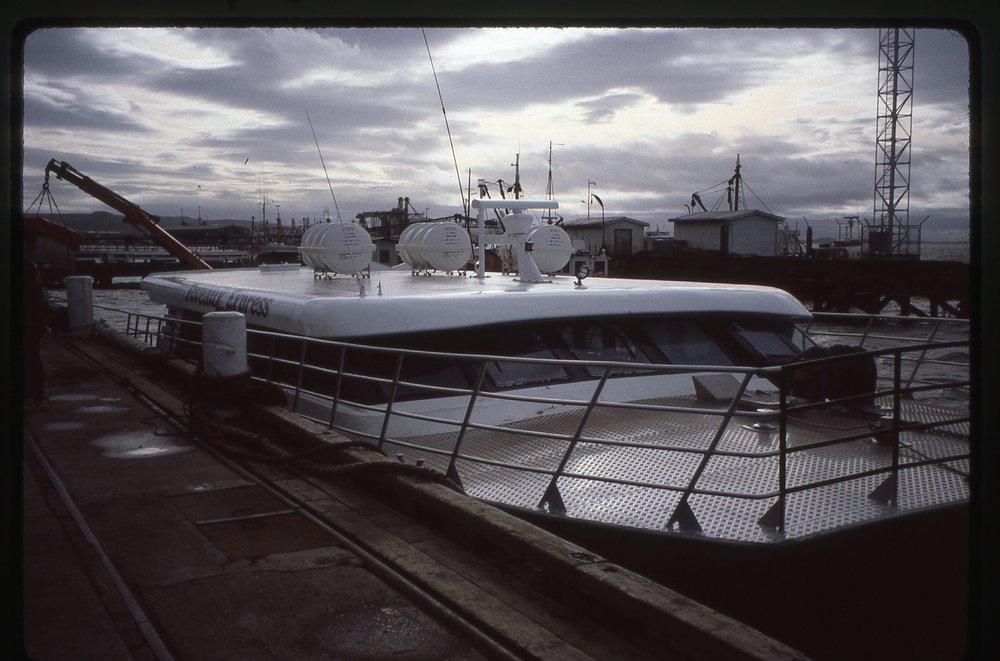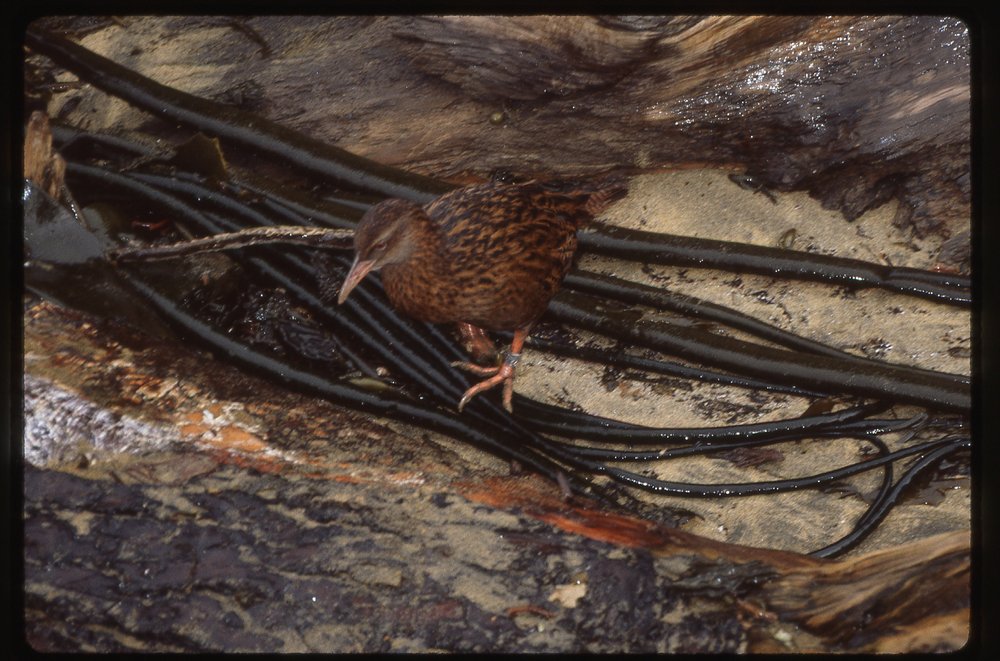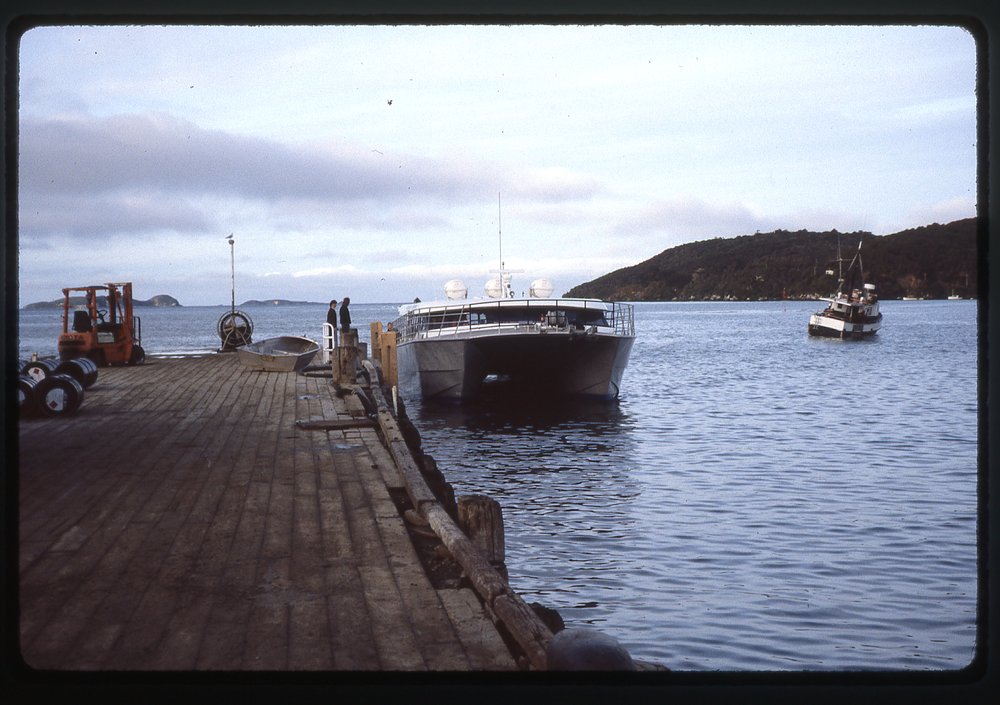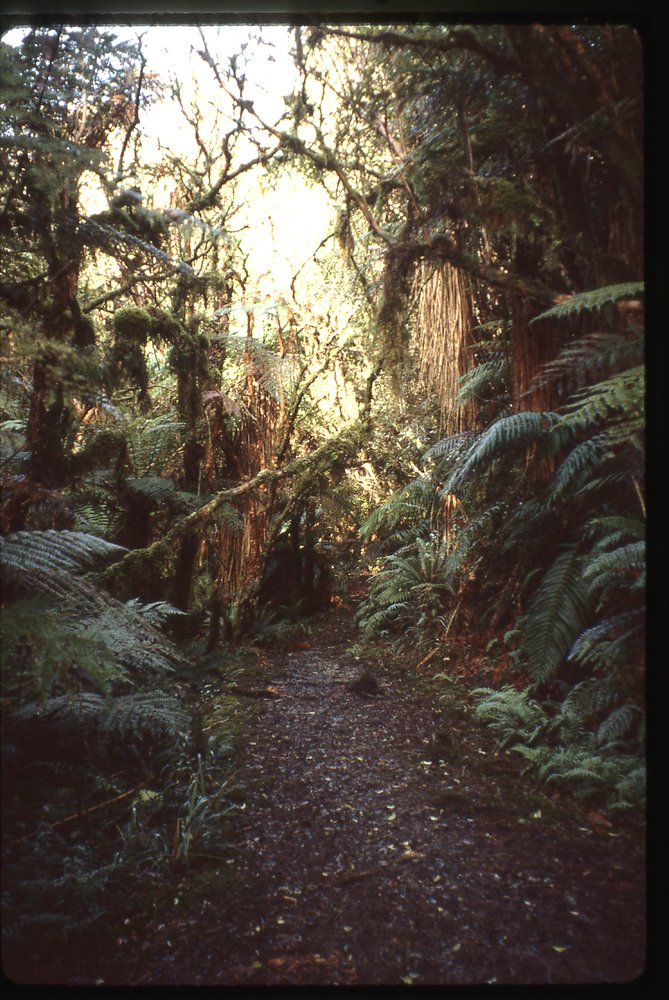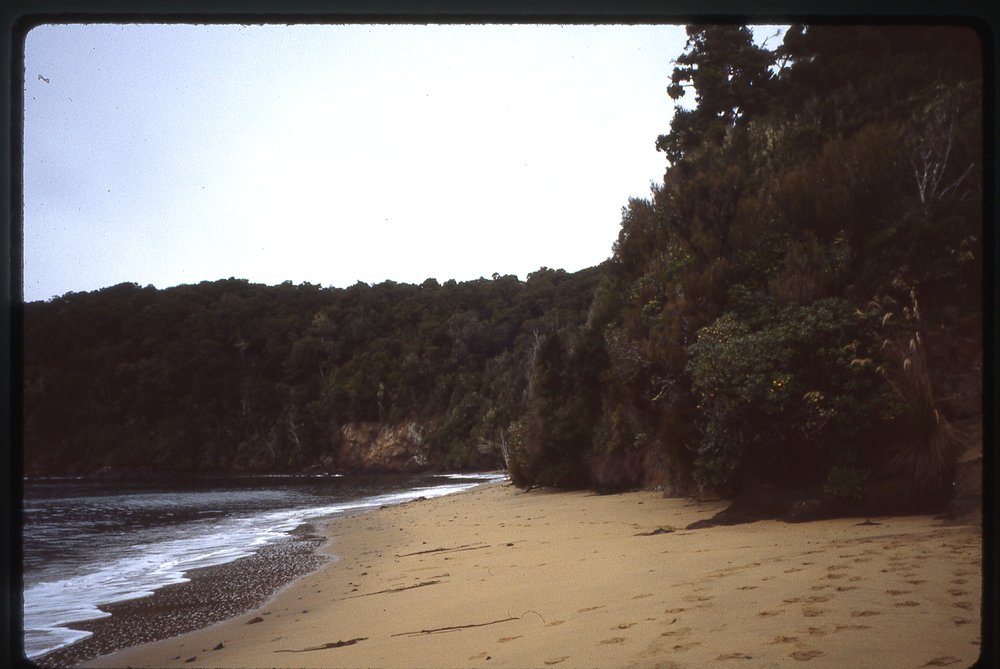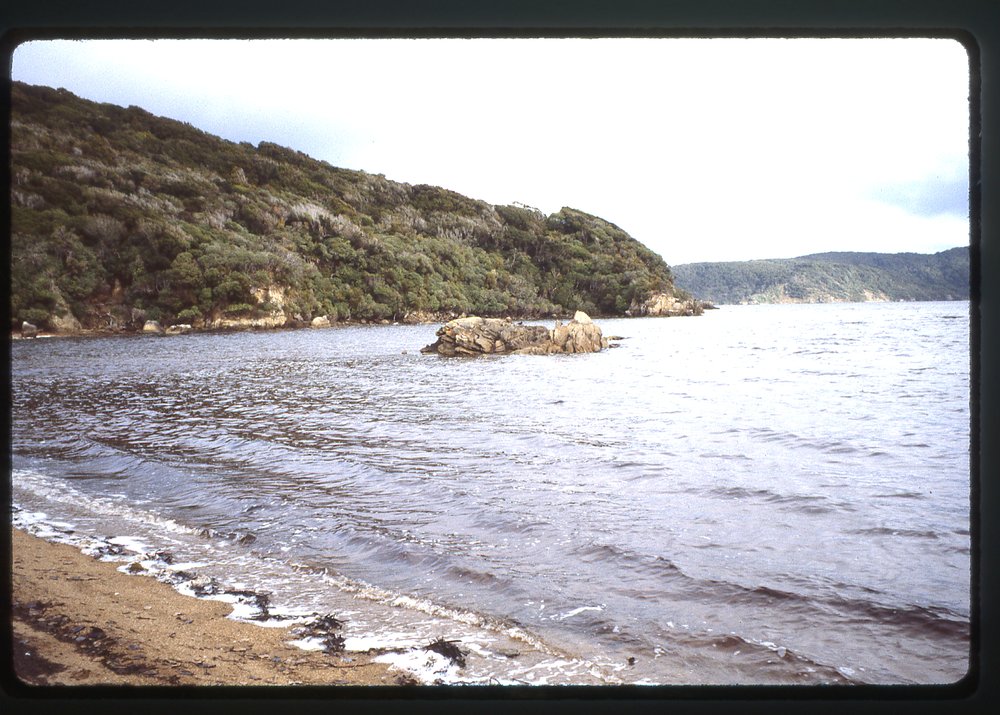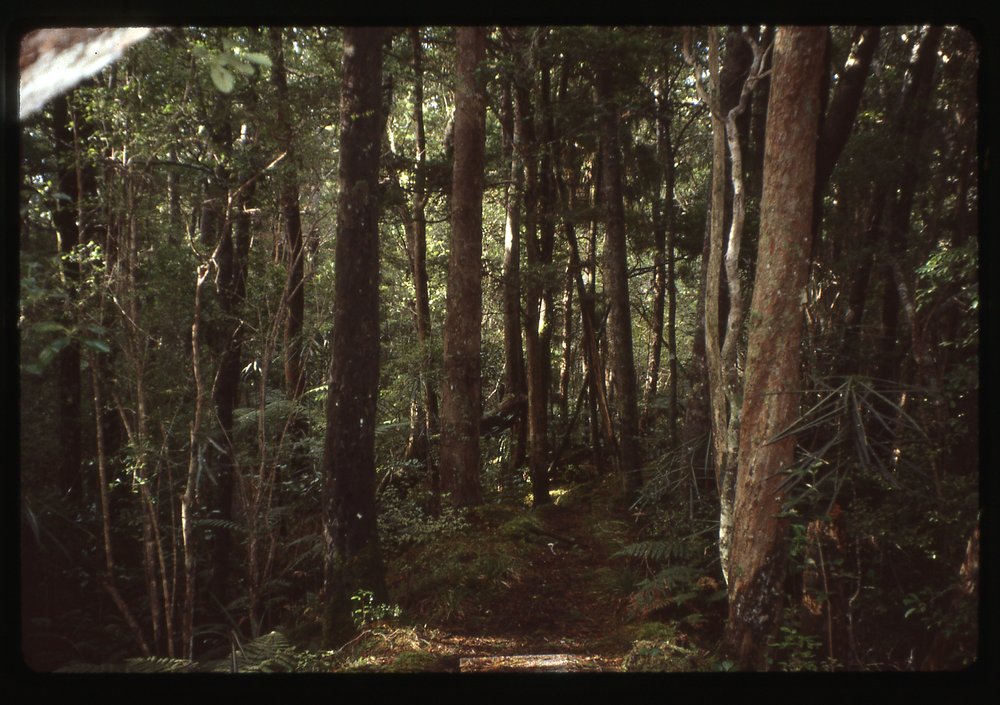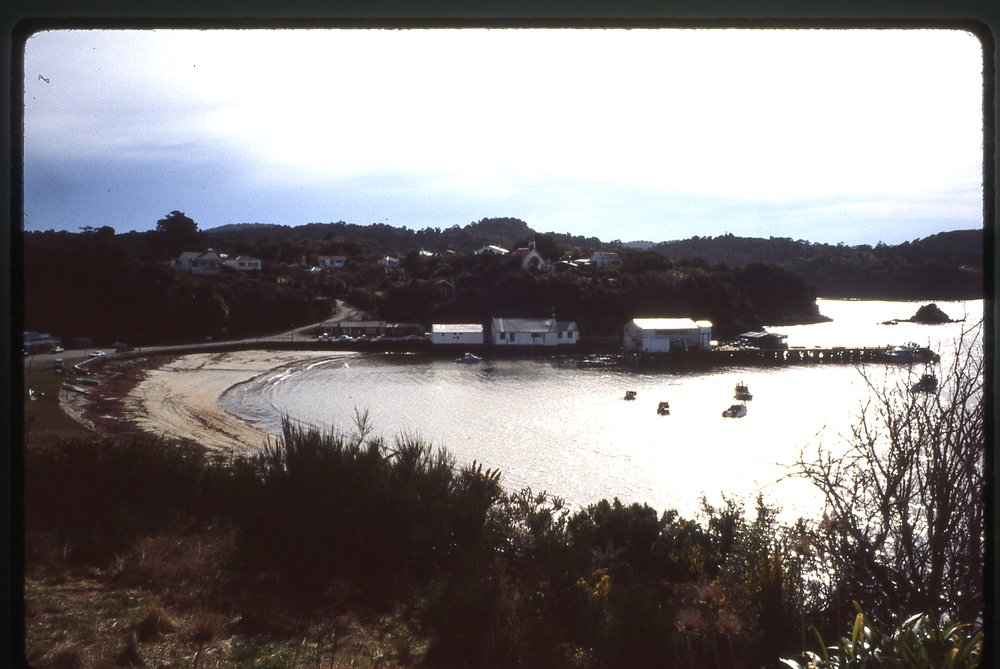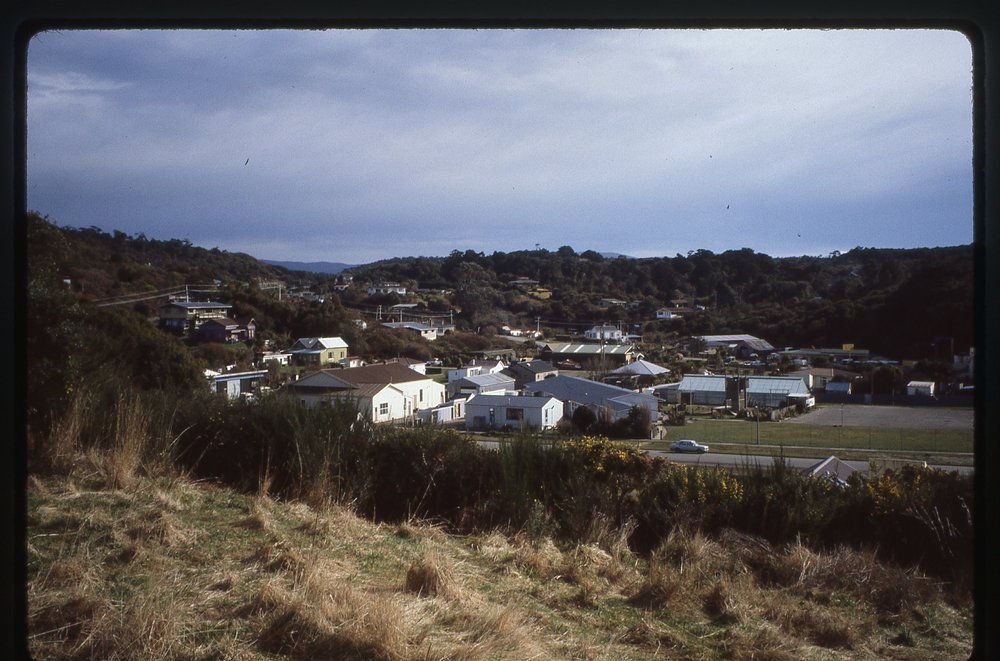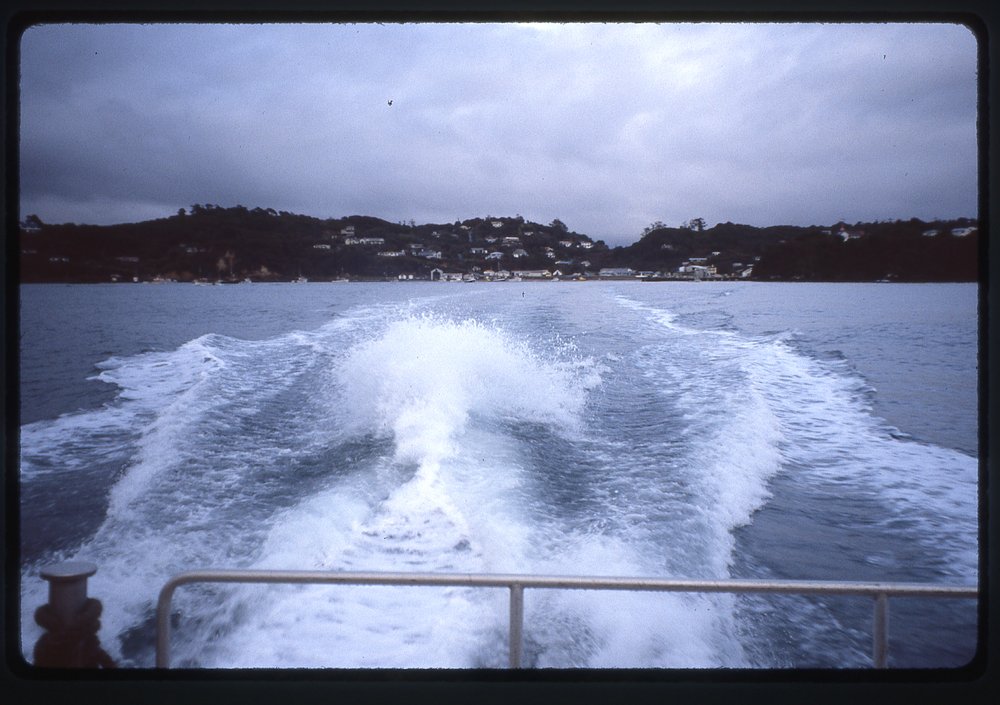Do you remember where you were and what you were doing on Friday, August 14th, 1992? I do, but the only reason I do is that I kept a diary. I was in New Zealand at the time, traveling alone, and on that particular day I was on the South Island. Let’s backtrack a bit, though. Before I arrived in the country, I had purchased a pass sold only to tourists, meaning someone who didn’t live in NZ. This pass allowed unlimited travel on buses, trains and the Inter-Island Ferry which plied the waters between the North Island and the South Island. For the price, it was a smokin’ deal and I was making maximum use of it.
I had just spent several days in Dunedin, as lovely a city as you’ll ever see – it had immediately become my favorite place in the entire country. I had met some wonderful people there, travelers like myself. Something important I should mention is that while I was in NZ, their dollar was worth about 50 cents US. Whenever I mention prices in this story, they’ll be in NZ dollars, so it’d be about half that amount in US dollars. Also worth mentioning was the fact that I had discovered backpacker’s hostels, the perfect answer for anyone traveling on a budget. They were often private homes where you shared a sleeping room and bathroom facilities, and had the use of a kitchen where you could cook your food, as well as a nice living room with television, radio, reading materials and games. I was staying in these hostels everywhere I went, and typically paid 12 or 13 dollars for the night. The owners were great, often picking you up from the bus or train station if you called them.
It was easy to find much in common with fellow travelers, so that when it came time to leave town and move on to my next destination, it was often with feelings of sadness that I said goodbye to these new-found friends. Such was the case as I left Elm Lodge in Dunedin on the morning of the 14th. Today I was bound for the city of Invercargill, a journey of 204 KM – it rained all the way, with clouds and mist preventing any view of the surrounding countryside. By the time we arrived in Invercargill, it was still raining. Now here’s a typical example of the legendary Kiwi hospitality for you. When the driver had dropped everyone off, he then drove me (the only one left on the bus) all the way out to the town of Bluff, a further 26 KM, at no additional charge, as he knew that was my final destination. Amazing.
Bluff sits at the southern end of a peninsula and is the southernmost town in mainland New Zealand. It is an active port, and also has a dock where one can catch the boat which travels to Stewart Island. Here’s a little information about the islands of New Zealand. There are many, but the three largest are: the South Island (about 58,000 square miles, or the size of the US state of Georgia); the North Island (about 44,000 square miles, or the size of the US state of Louisiana); and Stewart Island (about 650 square miles, which is smaller than the smallest US state (Rhode Island) which is 1,034 square miles). Today I was heading to Stewart Island, and to get there I would take the ferry.
When I arrived at the dock, it was a full 3 hours before the boat would leave. With nothing but time on my hands, I decided to have lunch. There was a pub nearby, so for $4 I enjoyed what they called their counter meal, the lunch special of the day – it was fish and chips (cod) which happens to be one of my favorite meals. Jaws 3 was on the TV while I ate and wrote postcards. Meanwhile, outside it was cold and windy, a rather nasty day. The ferry was docked nearby – a catamaran, she was called the Foveaux Express. My one-way ticket cost $37.
The boat was named for the Foveaux Strait, the body of water which separates the South Island from Stewart Island. The strait is described as “rough and often treacherous”, and it was the scene of 23 fatalities between 1998 and 2012. During my travels around Australia and New Zealand, I had adopted the habit of taking Dramamine before any travel on the water, as I found that these crossings could be challenging. That’s what I did today, as my usual precaution, before the 22-mile crossing.
There were 15 of us on board, all seated in the main cabin, where several rows of seats ran from one side to the other. There was room to seat fifty, so we were widely separated. Continuous windows along both sides and across the front offered excellent visibility of our surroundings. We had barely left the dock and headed out into the strait when the water became choppy, and the farther we went the worse it was. I was so glad I had had foresight enough to take the Dramamine some time before our departure so it had time to start working. My usual experience was that it made me feel kind of groggy but it prevented the nausea that can come from motion-sickness.
I don’t think we were even 15 minutes into the voyage before it got positively nasty. We were tossed up and down by huge waves. One moment a look through the front windows showed nothing but leaden skies, then the next we’d be looking down a trough into black, evil water. All of us on board were tourists, and it was rather unnerving to hear the screams of the other passengers. Fortunately there were railings that separated the seats from each other and the seats were all firmly bolted to the floor. All you could do was hang on for dear life. Most of the others were throwing up, except for me (yay, Dramamine!) and two German men who seemed to be positively enjoying themselves (amazingly, they were eating a lunch they had brought on board with them). One moment I swear we’d be airborne, and the next we’d slam back down on to the water hard enough to loosen your fillings. There were times I genuinely feared for my life. The crossing took one hour, and the captain told us when we disembarked that in his 20 years of making that crossing, that was the single worst day he had ever experienced. He also said that there were 4-meter high waves we had to contend with. As I look back through my diary notes for that day, I see that I had summed up the trip as “violent”. When we reached the dock at Stewart Island, it was so dangerous to disembark that workers there helped us off the boat one by one. The boat would ride up on each swell, then drop down again several feet. They timed it so that each of us would jump on to the dock at just the right moment, but looking back on it now, it’s a miracle nobody was crushed against the dock or tossed into the waves. It was so dangerous that they moved the boat to a more sheltered place and unloaded all our gear and their cargo, then trucked it back to the wharf where we waited. Huge waves and rollers were crashing in all along the edge of the town.
I was fast losing the daylight so had to decide where I’d spend the night. An inquiry led me to Ann’s Place, about a 1 KM walk out of town. The place was a dump, but for the price of $8 for the night, I couldn’t argue. It was so cold in the room that I turned on the stove burners and electric heater, which helped a bit. One luxury I had allowed myself on this trip was a tiny AM-FM radio with earphones, and this evening I tuned in to a station from Gore, which was a town I’d passed through on the bus earlier in the day. It was known as the country music capitol of NZ, and I enjoyed the old-time cowboy music they were playing. Meanwhile, the weather outside was cold and rainy. In spite of it all, I had a good night’s sleep.
The next morning, I packed up my gear (I was carrying it all in a huge backpack) and walked back into town, looking for different accommodation. One place was too expensive, another was too ugly. After much walking around with my pack, I ended up at Jo and Andy’s B and B. For $12 I have a freezing cold but clean, bright room (all to myself, at least for now). They are an interesting couple – he’s 13 years here, from Idaho, and she’s a Kiwi. Their cats are friendly and love a lap to curl up in.
I went out walking in the town and met a fellow named Peter Rolph, an English birder. We headed out together and soon saw a weka and a bellbird. After a few hours, it started to rain – we had planned to go look for a banded rail, but changed our minds due to the poor weather.
I headed back to my room. Mid-August is deep austral winter here in the Southern Hemisphere, and it was quite dark by 6:30 or so. Andy is a chain-smoker, so I was reluctant to spend time with them, but he kindly offered to not smoke if I wanted to hang out with them in their living-room. That was really nice of him, as it was warm and cozy there, with good music and conversation, so I spent a long, enjoyable evening with them.
After a good night’s sleep, I was up early and discovered there wasn’t enough light for birding until 7:30 AM. I went to a nearby cove and saw several tuis. I came back and Jo fed me a nice breakfast. Peter Rolph came by and we went out birding. It was a good day – we saw 9 kaka, and also redpoll and grey warbler. We also saw 3 parakeets but couldn’t determine which species they were. When it started to rain, we called it quits. Peter has been on a 12-month birding trip covering several countries and has added about 700 new birds to his life-list. We exchanged addresses; he then caught the ferry and left the island.
The afternoon was pleasant, so I headed out again. One place I visited was called Fern Gully – it was very lush and wet.
I saw 5 more parakeets but was unable to identify them. Back at the B and B, I was picked up around 6:00 PM and driven with 3 others to a wharf. I had decided to pay $45 to go on a tour to see kiwis (the bird, not the people). We went on a boat to Ocean Beach on the east edge of Stewart Island. The man who led these tours said he had practically a 100% success rate at finding kiwis. After we docked, we walked silently in the dark for 2 hours along a trail and on the beach. It was a terrific outing. We saw 4 kiwis (both male and female), and heard the calls of both male and female. We got to within 5 feet of one of them. The ones we saw were the Stewart Island subspecies of the Southern brown kiwi. We also saw possums, fairy penguins, sea lions, glow-worms and jellyfish on this fine, warm evening. We all carried flashlights supplied by the tour leader, and he advised us when to use them to see things to advantage. As you have probably already surmised, seeing birds was an important goal for me – this was my best day yet in NZ, with 7 new birds seen.
The next day was August 17th, and I awoke refreshed after another good night’s sleep. After breakfast, I paid Jo to do a load of laundry for me. The morning was spent walking around the village – such a nice, quiet, mellow place. People call the place Halfmoon Bay, but I think the official name might be Oban. In any case, it’s the only community on the island. Except for a small area around the town, nearly all of the island has been set aside as Rakiura National Park. In 1977, a small population of kakapo, a flightless, nocturnal parrot which is very close to extinction, was found on the island. Check out the link to learn more about this fascinating bird.
I had tea with 2 Swiss guys who were on the kiwi trip last night – they left the island today. Three more people checked into Jo and Andy’s at noon, then went on a boat trip with me in the afternoon. For only $15, the captain, Phil, dropped me off at Ulva Island where I wandered around to my heart’s content.
I spent an hour and a half and got deep into the bush where I had good looks at both yellow-crowned parakeet and red-crowned parakeet, as well as weka, kaka and New Zealand pigeon.
There was a crew working on the island on a rat-eradication program. Rats were not a native species but were introduced – if they can be eradicated, it will give native birds a better chance of survival. Our time on the island ended and Phil had us back on Stewart Island by 5:30. He sent some blue cod home with me, which I gave to Jo. She cooked it up and invited me to have supper with them. Their home is a comfortable place, warm and inviting. They have plenty of books and games. I think they had every Far Side cartoon book ever published, which I enjoyed. One of my favorites is this one, as in the future I would spend many years as a contractor myself.
On my last full day on Stewart Island, the 18th, I walked the village streets and visited the shops, purchasing a few locally-crafted souvenirs. Nearby hills afforded me these views.
After lunch, I walked out to Horseshoe Bay for some exercise. Back in town, I spent time in a pub drinking Roaring Forties Ale with 3 Germans. The pub claimed to be the southernmost brewery in the world, but I didn’t have the heart to tell them that that wasn’t the case. Oban sits at 46 degrees 54 minutes south latitude, which is pretty darn far south, but they weren’t taking Patagonia into account. There are pubs in the city of Ushuaia which are at 54 degrees 48 minutes south latitude, 550 miles farther south, so not even close! No matter, the ale was good.
Back at Jo and Andy’s, a Spaniard checked in and I now had a room-mate. Also, 3 Japanese girls arrived, who went out kiwi-watching that evening. Later on, it poured rain. Have I mentioned the rain? New Zealand is one rainy place in the winter. I spent 31 days in the country during this 1992 trip, and I was rained on for 29 of them.
Angel, the Spaniard, snored all night – not good for me, the world’s lightest sleeper. I arose early, showered, said goodbye and thank-you to Jo and Andy and walked to the ferry. On board, I met 3 girls who had just spent 10 days walking the northern circuit of the island – most impressive. The trip across the Foveaux Strait was, thankfully, fairly smooth, in marked contrast to the nightmarish trip several days earlier.
My time spent on Stewart Island had been a wonderful experience, surrounded by kind people who went out of their way to make me feel welcome. I felt fortunate to have been able to visit there when I did. Thanks for keeping me company.

